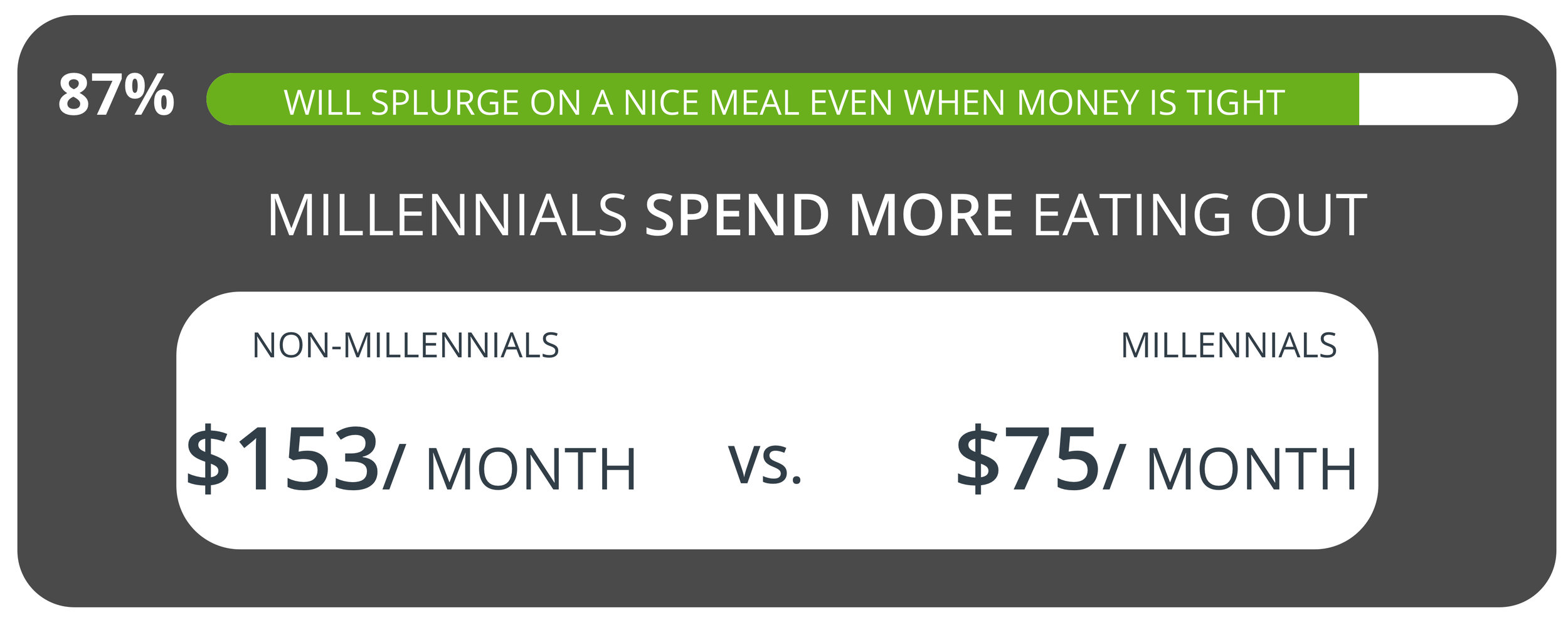Product Concept Story
Step 1: Explore
In the exploration phase we conducted secondary market research using the S.T.E.E.P. Method (Social, Technical, Environmental, Economical and Political) This process allowed us to clearly define the market, understand who the core users are, and engage in more focused primary research.
Insights from secondary research
The secondary research revealed an opportunity for millennials to save money through deeper understanding of their restaurant and cooking habits. This insight was further explored through primary research in the form of IDI (In Depth Interviews).
in-depth-interviews
Our team developed a screener that we used to source people that fit our core demographic. In this round of interviews, we were interested in learning more about how millennials relate to cooking, eating, and grocery shopping.
Synthesizing Interviews & Forming Core Insights.
Core Insights
Step 2: Brainstorm
As a team, we imagined possible solutions that were driven by core insights.
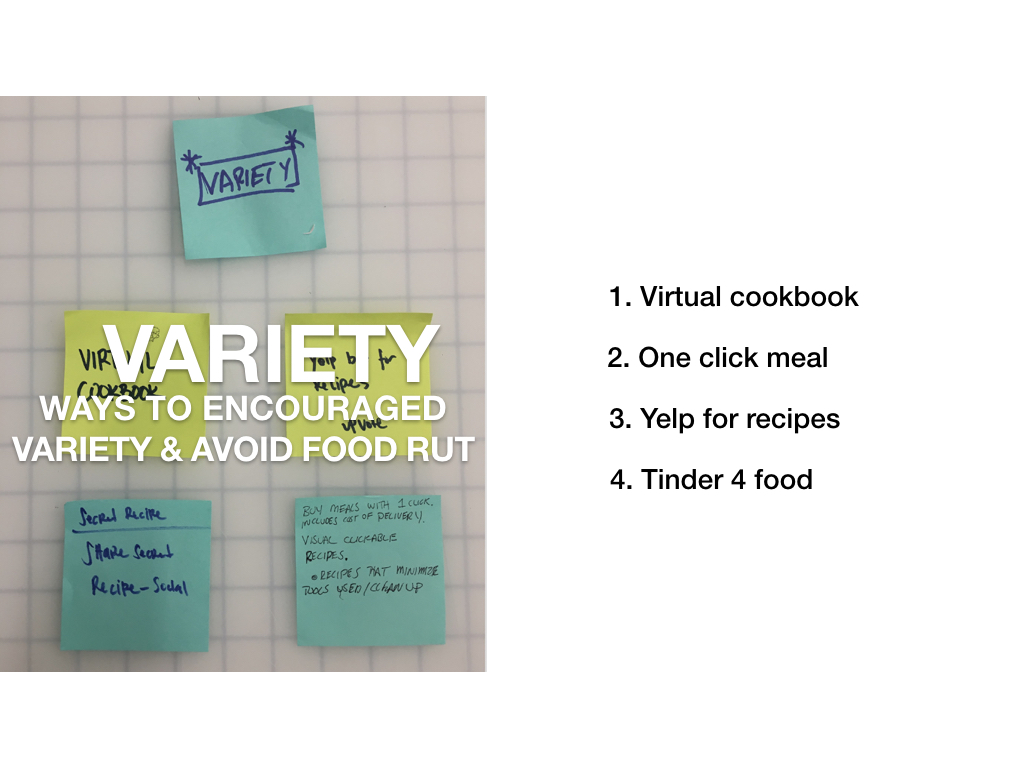
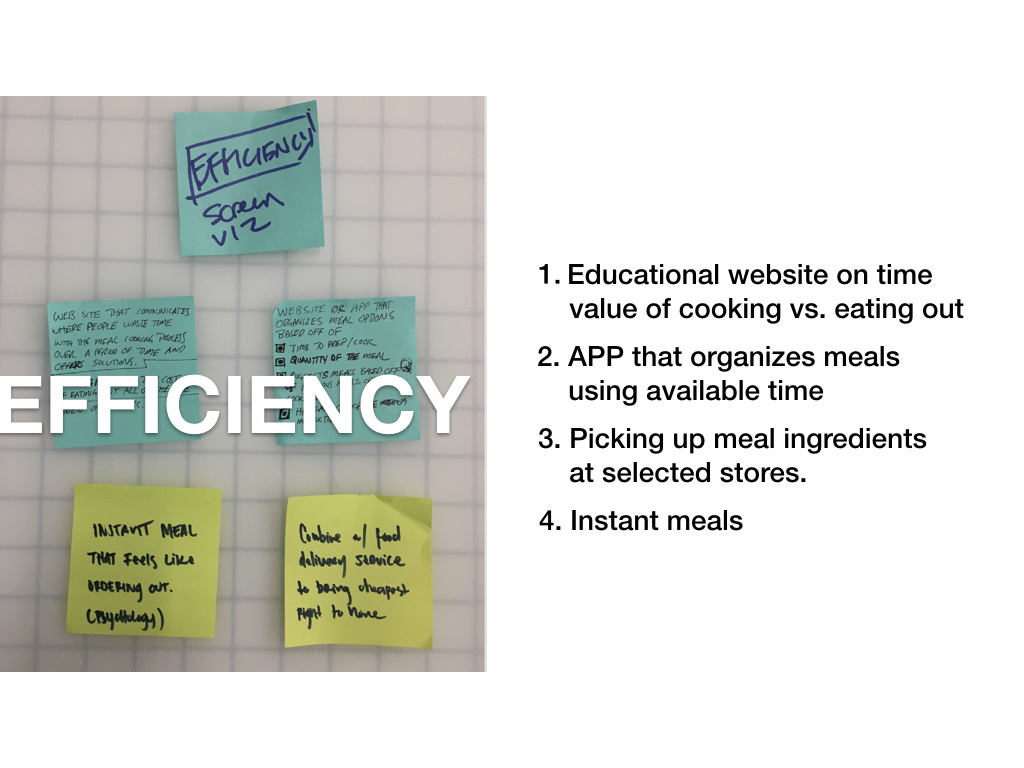
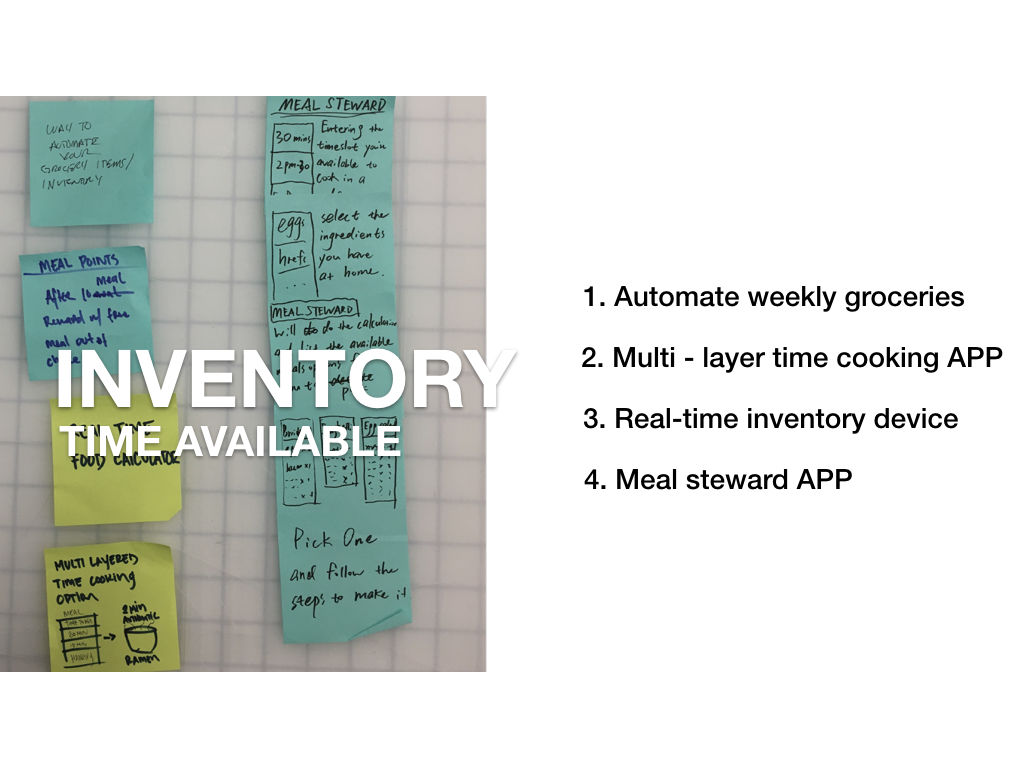
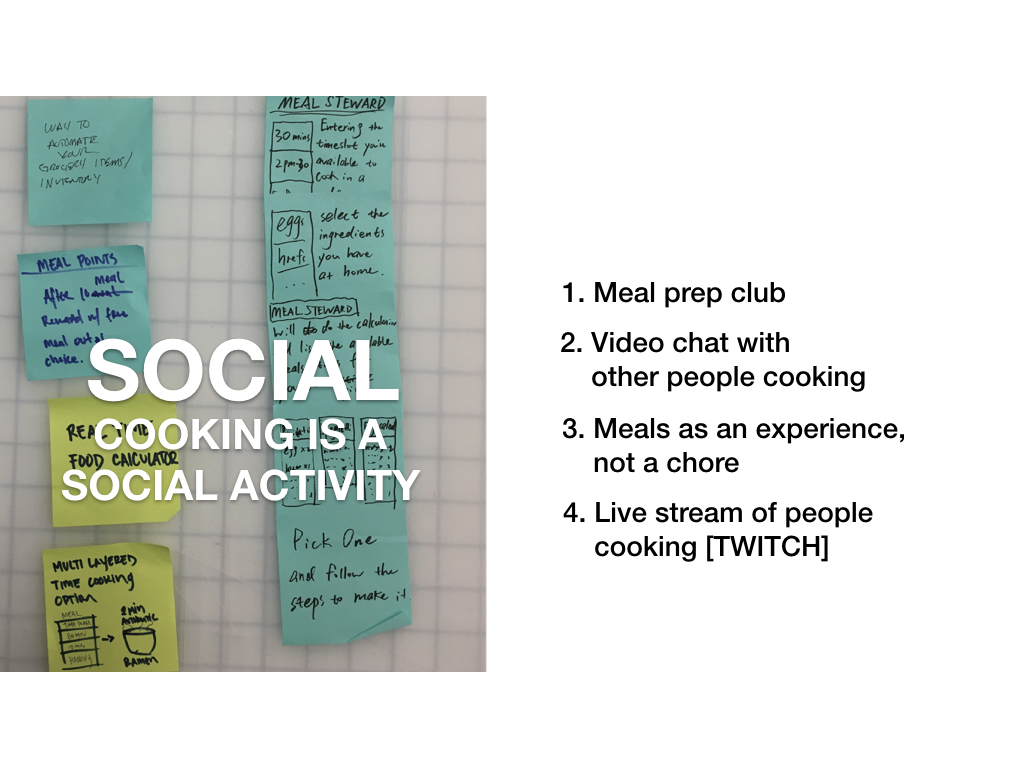
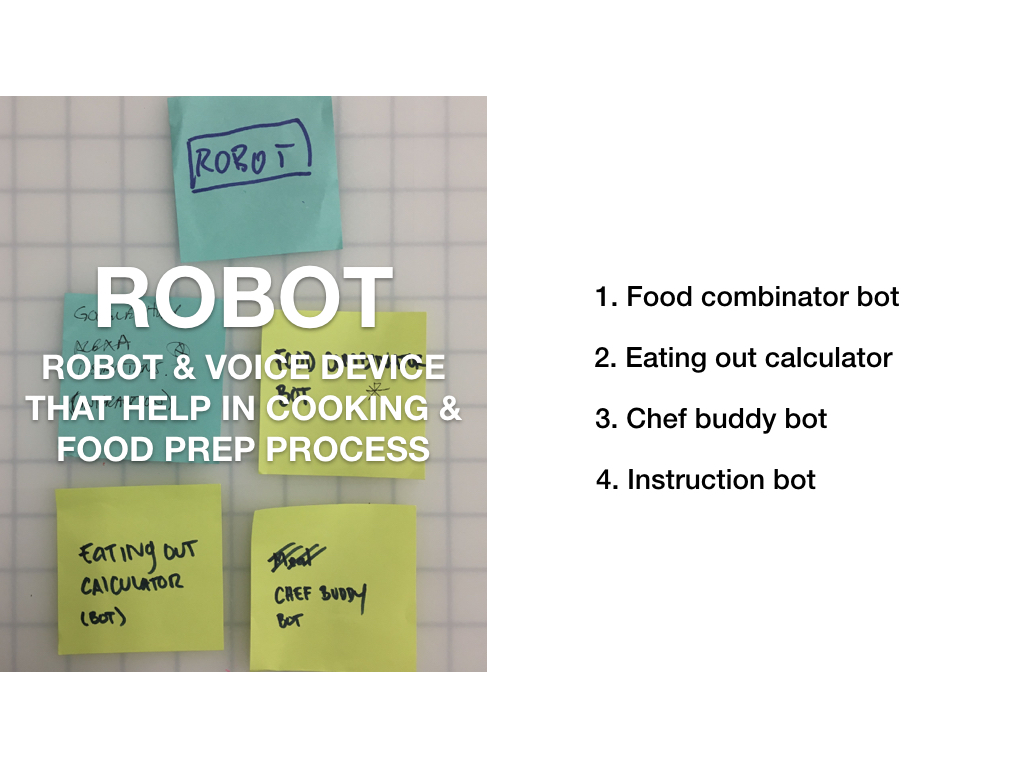
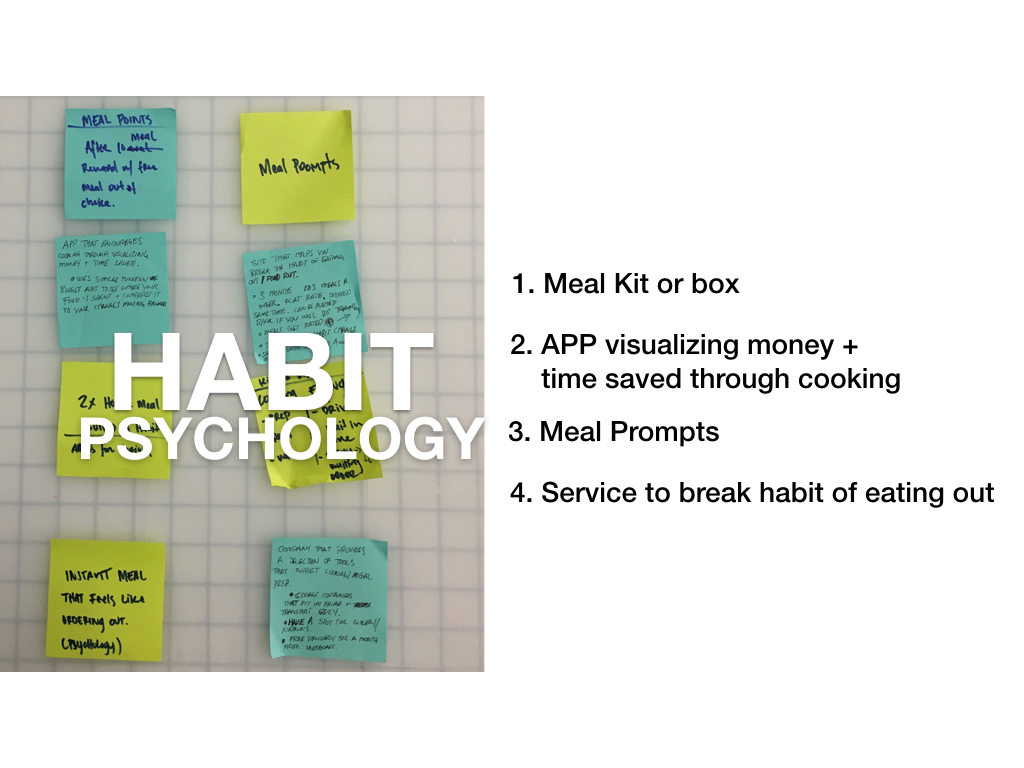
Step 3: Converge
Two concepts from brainstorming were developed into Lo-Fi prototypes for testing. They were chosen because they aligned with market insights and had the potential to solve some of our market's needs.
Concept 1 - Mrs. Green
Mrs. Green is an app that allows users to search for nearby food. The only catch is that instead of take-out, it is leftovers cooked by people near you or in your neighborhood.
Concept 2 - Food Win
Food win is an app where users swipe meals that they like. When they want to go shopping, 1-3 shopping lists will be sent to them. These lists come with clear cooking instructions and are based off of the user's preferences. The app also shows nearby stores with the total prices for all ingredients at each location.
Highlighting Risky Assumptions
Synthesizing Riskiest assumptions
Once we considered the riskiest assumptions, we synthesized them, and then used this process to generate a “will-kill hypothesis” for each of the design concepts. The will-kill hypothesis highlights the crucial assumption that may render the design direction a failure. It produces a valuable way to validate or invalidate the merit of any potential design.
conclusion
Through Secondary research, In-depth- interviews, and user-testing, we determined that the Food Win app has merit for further development. Currently we are refining the prototype and hoping that it will soon help urban millennials save money.






